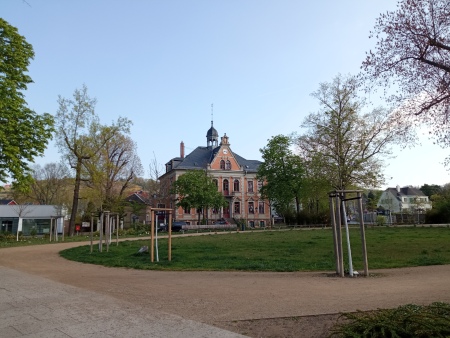Niederlößnitz
In 1832, 85 vineyard owners came together above today's Meißner Straße and founded the Niederlößnitz Vineyard Association.
The reason for this was the unclear affiliation of the vineyard land, on which numerous winegrowers' houses had been built in the 17th and 18th centuries.
In church and school terms, they belonged to Kötzschenbroda, but judicially they were directly subject to the Dresden court office and were therefore exempt from many of the municipal burdens of a village. The neighbouring Lößnitz villages refused to take on obligations such as caring for the poor for the winegrowers.
As a result, municipal burdens were increasingly imposed on the home district, which had to give up its interim status.
In 1839, the political municipality of Niederlößnitz was founded with the election of the first municipal council in the Goldene Weintraube inn. In the years that followed, it developed into an impressive villa town. Just 30 years later, more than 1,000 inhabitants lived here.
This made Niederlößnitz the second largest Lößnitz municipality after Kötzschenbroda.
The conversion of vineyards into building land as a result of the phylloxera disaster had led to a veritable population explosion.
Industrial development was deliberately prevented. Instead, further development in the "tasteful villa style" and the expansion of the infrastructure with electric street lighting, the Luisenstift school and numerous restaurants were pushed ahead.
In 1923, the western communities of Lößnitz merged to form the large community of Kötzschenbroda and Niederlößnitz lost its municipal independence again.
Tip:
On the stele in Niederlößnitz (Bodelschwingstraße) you will find another QR code for the audio story about "Sekt vom Steinrücken - Die Sektkellerei Bussard".
You might also be interested in:
>> Treasures from the city archive
>> History of the town
>> Histories


